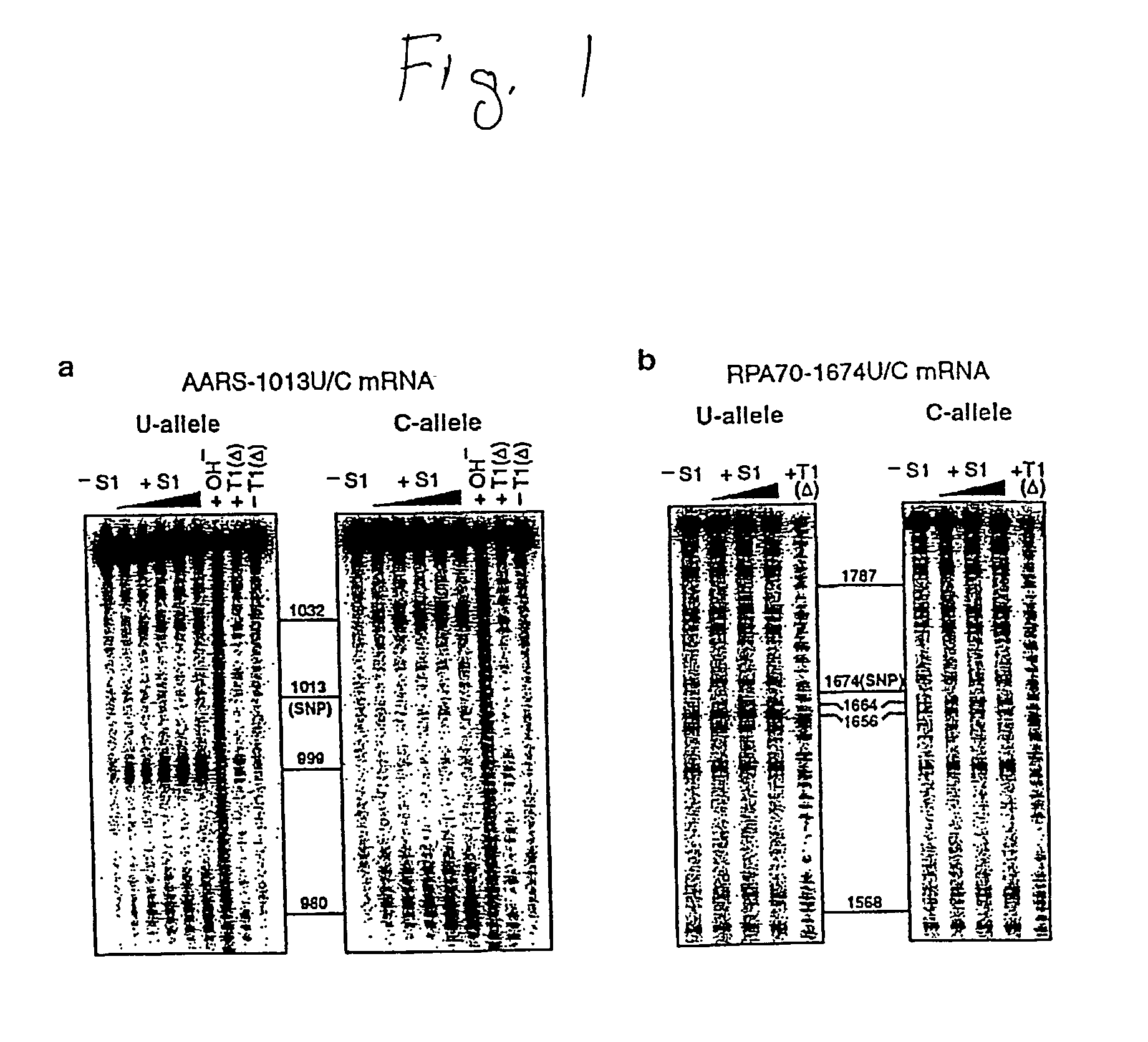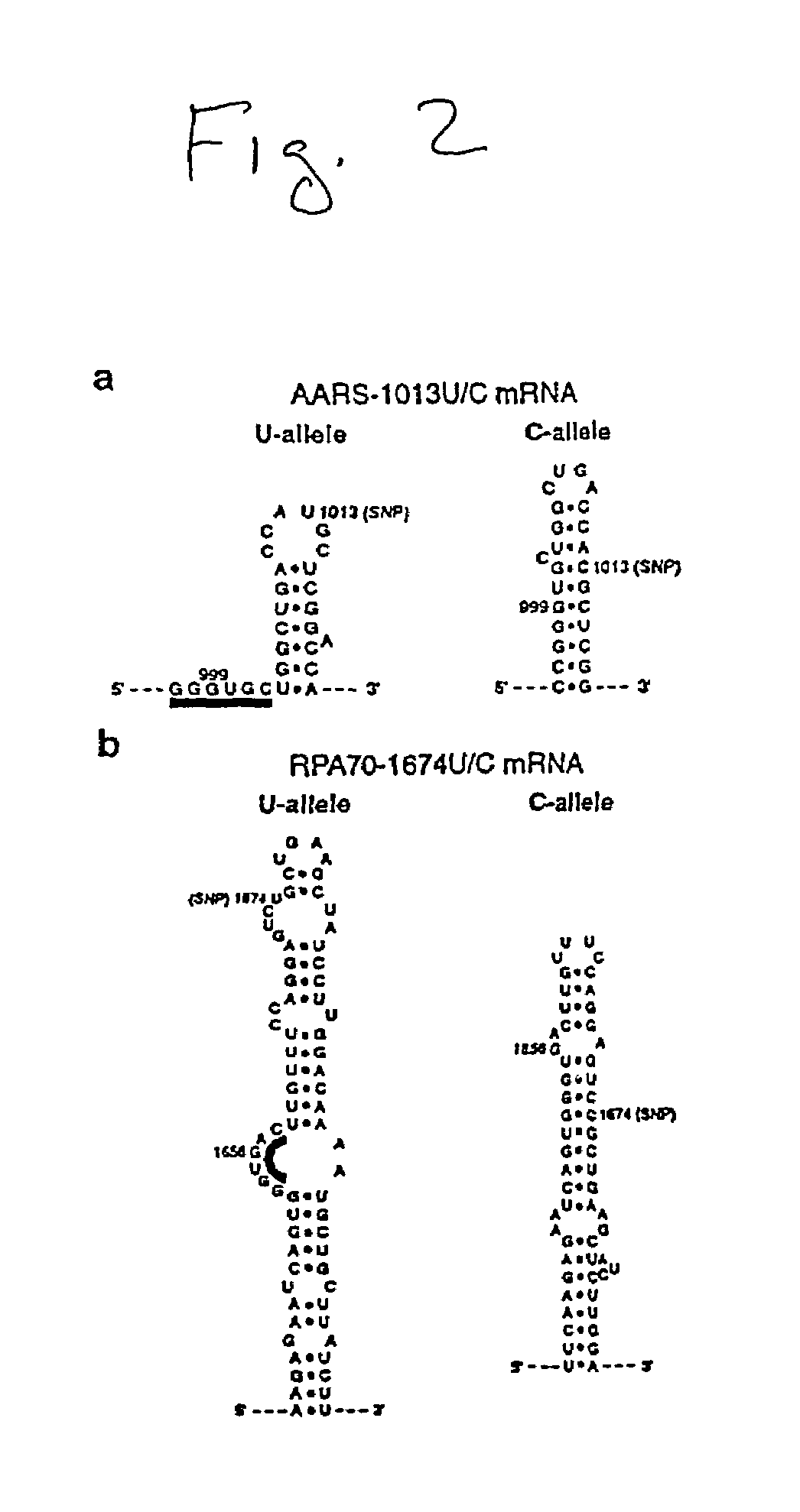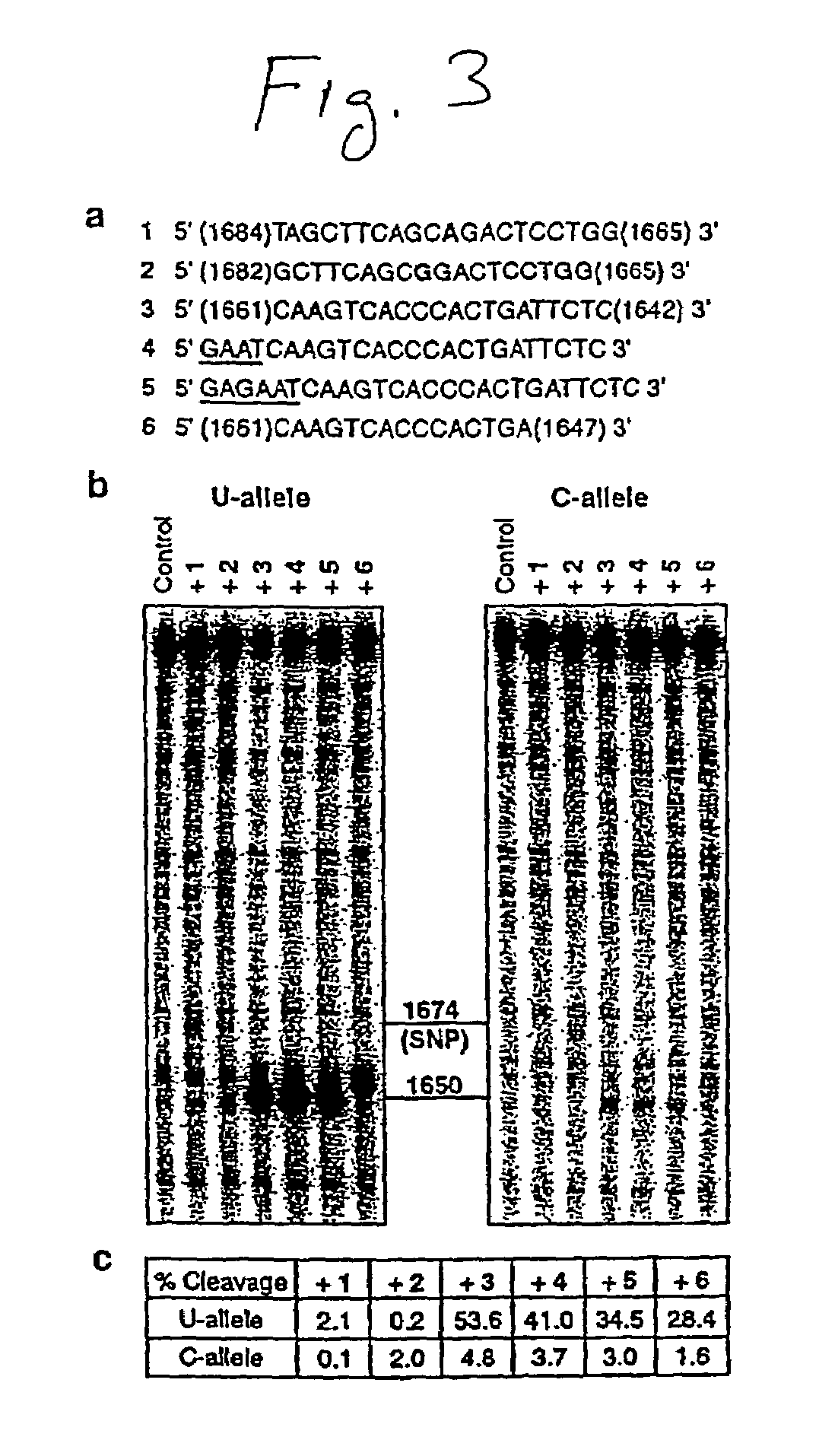Methods for targeting RNA molecules
a technology of rna and rna fragments, applied in the field of compound identification, can solve the problems of limited clinical success of rna fragments, and achieve the effect of increasing the affinity of complexes
- Summary
- Abstract
- Description
- Claims
- Application Information
AI Technical Summary
Benefits of technology
Problems solved by technology
Method used
Image
Examples
example 1
[0167]In vitro Synthesis and Purification of mRNA. Human cDNAs for PCR synthesis of transcription templates were prepared from total RNA of Epstein-Barr virus (EBV) transformed lymphoblasts (Coriell Institute) or tumor cell line NCI-H292 (American Type Culture collection). The cDNAs were genotyped for SNPs in human AARS and RPA70 either by sequencing or by restriction fragment length polymorphism (RFLP) analysis. A second round cDNA sequencing was performed to confirm the nucleotide sequence of AARS and RPA70 cDNAs. Fragments of human mRNA alleles (113–1000 mers) varying in a single base were obtained by in vitro transcription from PCR derived DNA templates using Megashortscript or Megascript T7 kits (Ambion). Crude transcripts were either purified on an 8% denaturing polyacrylamide gel or on a G-50 sephadex spin column (Boehringer Mannheim), and the purified mRNA was subsequently dephosphorylated using calf intestinal alkaline phosphatase (Pharmacia) and 5′-end-labeled with 32P usi...
example 2
[0168]Enzymatic Mapping of Allelic mRNA Structures. Partial digestion of 1 pmol of 5′-32P-labeled allelic mRNA by nuclease S1 or RNase T1 (Pharmacia) was carried out at 37° C. for 5 min in 10 μL buffer containing 10 mM Tris.HCl, pH 7.5, 100 mM KCl, 5 mM MgCl2, and 5 μg phenol-extracted glycogen. Prior to the addition of S1 or T1, the RNA was renatured in the assaying buffer by heating for 45 sec at 85° C., then cooling for 5 min at room temperature followed by 10 min at 37° C. The digestion products were fractionated on either a 4, 6 or an 8% denaturing polyacrylamide gel, and the cleavage patterns visualized by autoradiography. RNase T1 digestion at 55° C. and alkaline hydrolysis at 85° C. were done to generate sequence ladders for cleavage site identification. RNase T1 digestion at 55° C. was done for 1 min in 15 μL buffer containing 25 mM sodium acetate, pH 5.2, 25 mM KCl, and 3 μg yeast tRNA. Alkaline hydrolysis was done for 15 min in 15 μL buffer containing 50 mM sodium bicarbo...
example 3
[0169]E. coli RNase H Digestion Assay. Phosphorothioate oligodeoxyribonucleotides (PS-oligos) were employed in our studies because of their enhanced stability against nucleases (20). PS-oligos were chemically synthesized and desalted on C-18 cartridges by Synthetic Genetics. One pmol of 5′-32P-labeled mRNA was renatured in 12 μL RNase H buffer (20 mM Tris.HCl, pH 7.5, 10 mM KCl, 5 mM MgCl2, 0.1 mM dithiothreitol (DTT), 5% glycerol, and 10 μg phenol-extracted glycogen) by heating for 1 min at 85° C., then cooling for 5 min at room temperature followed by 10 min at 37° C. E. coli RNase H (0.6 units, Pharmacia) was then added to the renatured mRNA and incubated for 5 min at 37° C. PS-oligos (5 pmol in RNase H buffer) were subsequently added, and the reaction mixture (15 μL total) incubated for 20 min at 37° C. The digestion products were fractionated on a 4% denaturing polyacrylamide gel, and the cleavage patterns visualized by autoradiography. RNA levels were quantified using a phosph...
PUM
| Property | Measurement | Unit |
|---|---|---|
| molecular weight | aaaaa | aaaaa |
| molecular weight | aaaaa | aaaaa |
| molecular weight | aaaaa | aaaaa |
Abstract
Description
Claims
Application Information
 Login to View More
Login to View More - R&D
- Intellectual Property
- Life Sciences
- Materials
- Tech Scout
- Unparalleled Data Quality
- Higher Quality Content
- 60% Fewer Hallucinations
Browse by: Latest US Patents, China's latest patents, Technical Efficacy Thesaurus, Application Domain, Technology Topic, Popular Technical Reports.
© 2025 PatSnap. All rights reserved.Legal|Privacy policy|Modern Slavery Act Transparency Statement|Sitemap|About US| Contact US: help@patsnap.com



